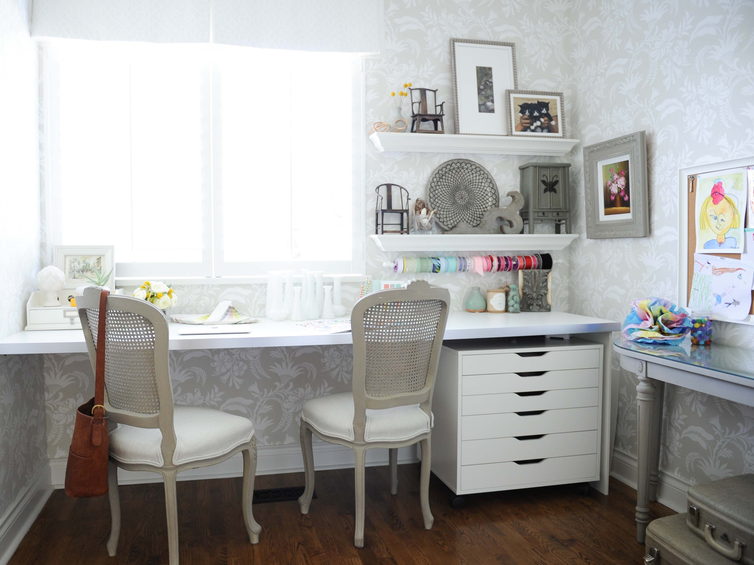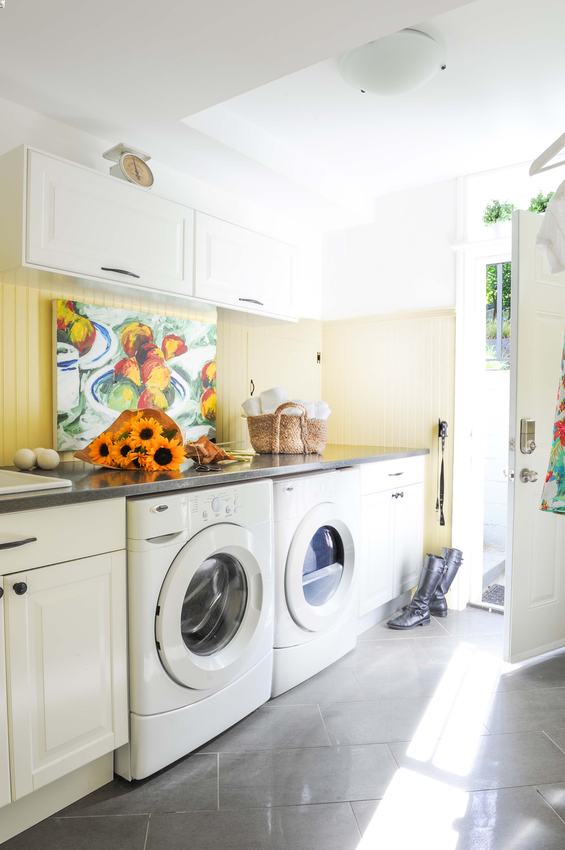
Whether you are planning an upcoming interior design project or just feeling overwhelmed by your stuff, there is no question that decluttering your home has incredible benefits.
A clean slate can give you a renewed sense of purpose and creates both mental and physical space for new pursuits or phases of life. Take one of our clients, for example, whom we encouraged to get rid of her clutter, and then we converted her walk-in storage closet into a nursery for her newborn baby!


With a second client, we transformed a seldom used guest bedroom into a fabulous dressing room where she feels excited about getting dressed every day.



While these are extreme decluttering success stories, there are lots of smaller ways you can experience the power that decluttering has on clearing your mind, simplifying your life and making room for abundance.
Remember…large projects like those mentioned above can quickly become overwhelming, but the bigger the project, the bigger the payoff. Who wouldn’t want to gain a whole new room without adding on to their house, am I right?
Keeping yourself on track is instrumental to your success, so we are sharing our 7 top tips for decluttering your space.
1. Stay focused on a single space
We all know that sometimes when inspiration strikes it is hard to stay focused. What starts out as an exciting project can quickly turn into an overwhelming task.
That is why we suggest that you focus on just one room – or even one drawer or cupboard – at a time. If you come across misplaced items, put those in a pile to deal with later rather than running off to put them away.
Staying focused on one room or area will keep the task manageable and reduce overwhelm.

2. Give yourself plenty of time
Set aside a block of time – one or two hours a day – when your energy level is high, to work on your project. This relates back to being focused. If you do a bit here and a bit there you will not be as efficient and it will take that much longer to see results. That’s when motivation can fade.
Work in shorter dedicated blocks of time and give yourself permission to stop if you are feeling tired or frustrated. You need to conserve your energy so you will be motivated to resume your task the next day.
3. Have decluttering boxes within arm’s reach
Setting up boxes or bins for different categories of items like “sell”, “donate” or “relocate” will keep you from leaving the area and getting distracted.
If your progress is slowed by making difficult decisions on hard-to-part-with items, you should have a “decide later” box so you don’t lose momentum. The next two tips provide you strategies to cope with those difficult decisions.

4. Don’t let guilt sway your decisions
We acknowledge that parting with your belongings can be emotionally draining, bringing up feelings of guilt or even loss; think of an expensive but unsuitable gift or a treasured family heirloom passed down to you by your beloved grandmother.
In any case, if you do not love it or it is not serving you, it will drain your energy, so honour the giver by passing it on (by either donating or selling it) to someone who will really appreciate it.
Sometimes just knowing that someone else will appreciate having the item can make parting with it easier. You might even make some money toward your next home improvement project by holding a garage sale or selling unwanted items online.
If you are really stuck on something, put it into your “decide later” box and store it away for 6 months. Chances are if you haven’t missed it in that time you won’t miss it when it’s gone for good.

5. Take photos to remember later on
Photos are a great way to commemorate items that have sentimental value, like children’s artwork or family heirlooms that don’t suit your décor. Plus, they don’t take up a lot of space!
6. Choose attractive, consistent storage solutions
For me, one of the best parts of any organization project is designing and selecting the new storage solutions. Whether you are designing a new closet organizer or purchasing new containers, keep built-in selections consistent throughout your house and choose nice looking containers, like baskets or decorative boxes, to suit your decor.

7. Implement rules against future clutter
After going through this grueling process you will feel – at least temporarily – like you never want to buy another thing, especially if you stop to think about all of the money you have spent on things that no longer serve you. This is a great time to establish some rules around acquiring new things.
For instance we have a rule in our house that for everything you bring in, one or two things must go. It is also a good idea to let well-meaning relatives and friends know that you are trying to live a more sustainable lifestyle and prefer consumable gifts, experiences, or gift cards over material things.
We suggest that anyone considering home improvements should start by getting rid of anything that you don’t absolutely want or need. At best you could free up a whole new room or space in your house, at the very least you will save money on unnecessary storage solutions and experience the peace of mind of having less clutter.
Need help refining the purpose, aesthetic, and functional layout of your space? We are here for you. We invite you to contact us for any assistance, big or small!
Until next time,
Lori











